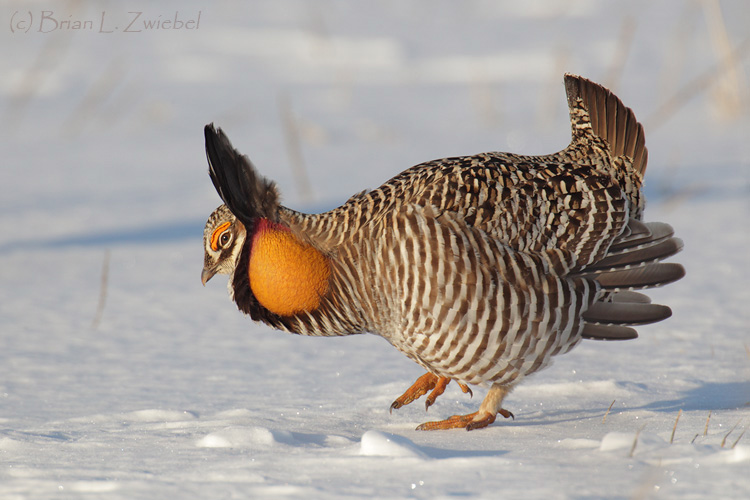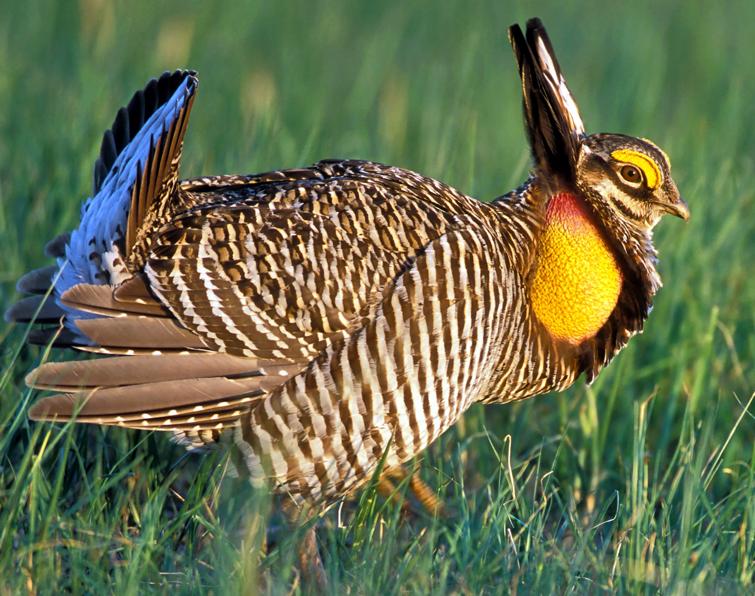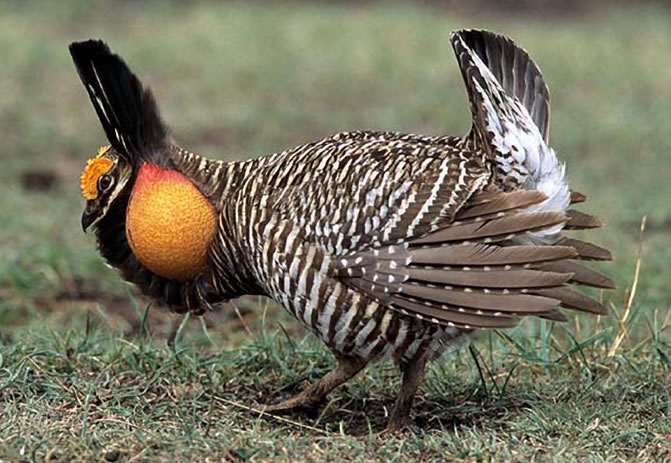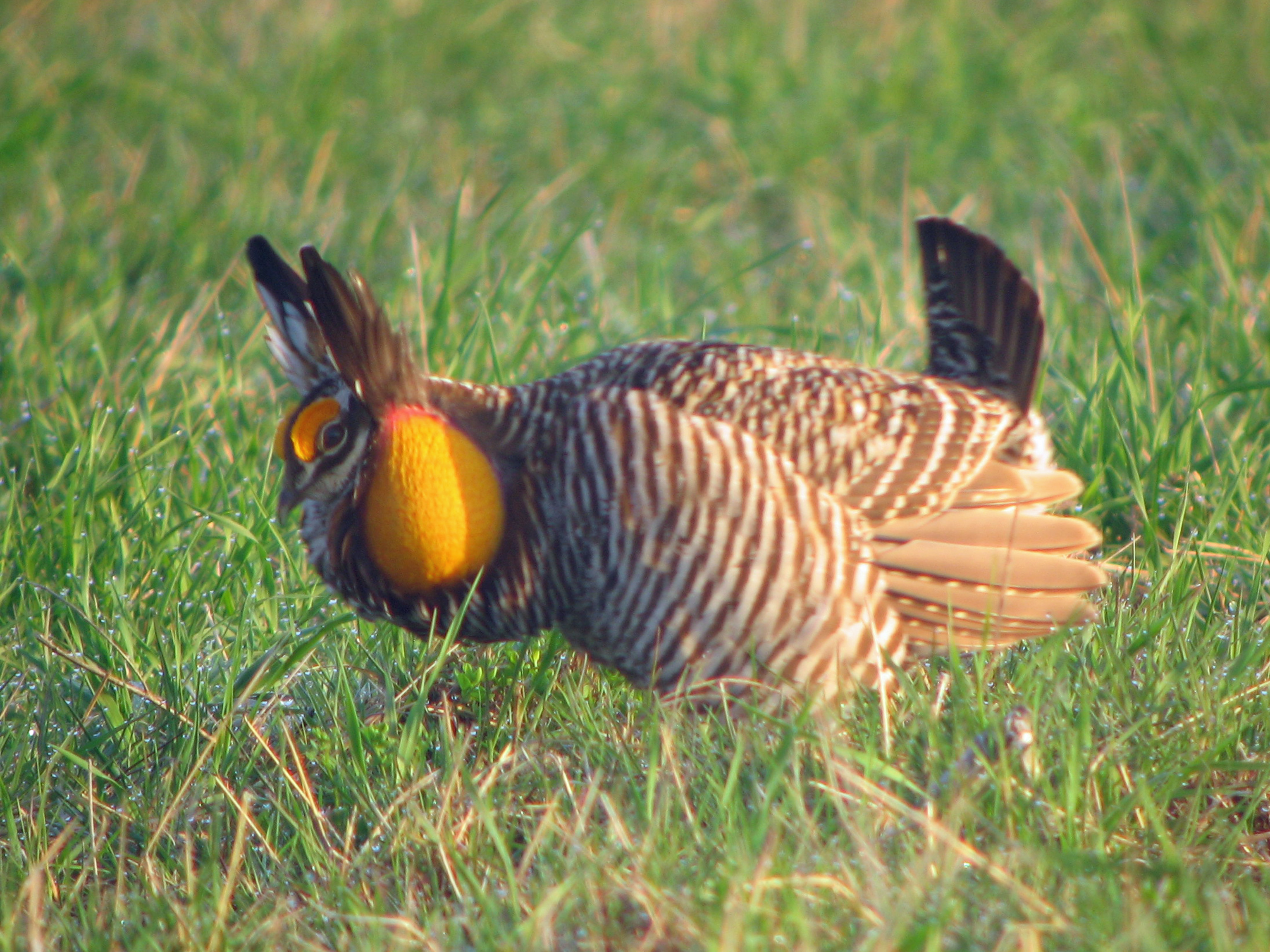
Tympanuchus cupido
SUBFAMILY
Tetraoninae
TAXONOMY
Tetrao cupido Linnaeus, 1758, Virginia, United States. Two extant
subspecies.
OTHER COMMON NAMES
English: Pinnated grouse, prairie grouse; French: Tйtras des
prairies; German: Prдriehuhn; Spanish: Gallo de las Praderas
Grande.
PHYSICAL CHARACTERISTICS
16–18 in (41–47 cm); male 2.2 lb (990 g); female 1.7 lb (770 g).
Brown overall with extensive barring on both upperparts and
underparts; short, rounded, blackish tail; elongated feathers on
the sides of the neck (pinnae) are erect during courtship;
golden yellow cervical sacs; yellow to orange eye combs. Females
similar to males but with smaller pinnae and smaller,
paler cervical sacs.
DISTRIBUTION
North America, mainly from Oklahoma to North Dakota.
HABITAT
Prairie remnants amid arable cropland.
BEHAVIOR
Classic lek-forming species; spectacular display, audible over a
mile or more; gather into large mixed-sex flocks in winter.
FEEDING ECOLOGY AND DIET
Takes acorns, smaller seeds, leaves, buds; cultivated grains
(corn, soya); grasshoppers and other invertebrates.
REPRODUCTIVE BIOLOGY
Promiscuous. Mating at leks, generally excluding yearling
males; nests in thick grass cover in April–June; clutch size eight
to 13; incubation 23–25 days.
CONSERVATION STATUS
Not threatened overall, but the heath hen (T. c. cupido) of New
England is Extinct, and Atwater’s prairie chicken (T. c. atwateri)
persists as two populations in southeastern Texas.
SIGNIFICANCE TO HUMANS
Enjoyed by bird-watchers for the spring spectacle and used as a
flagship species for prairie conservation.
Other popular Animals
Photo Gallery of - Greater prairie chicken




 Animalia Life
Animalia Life